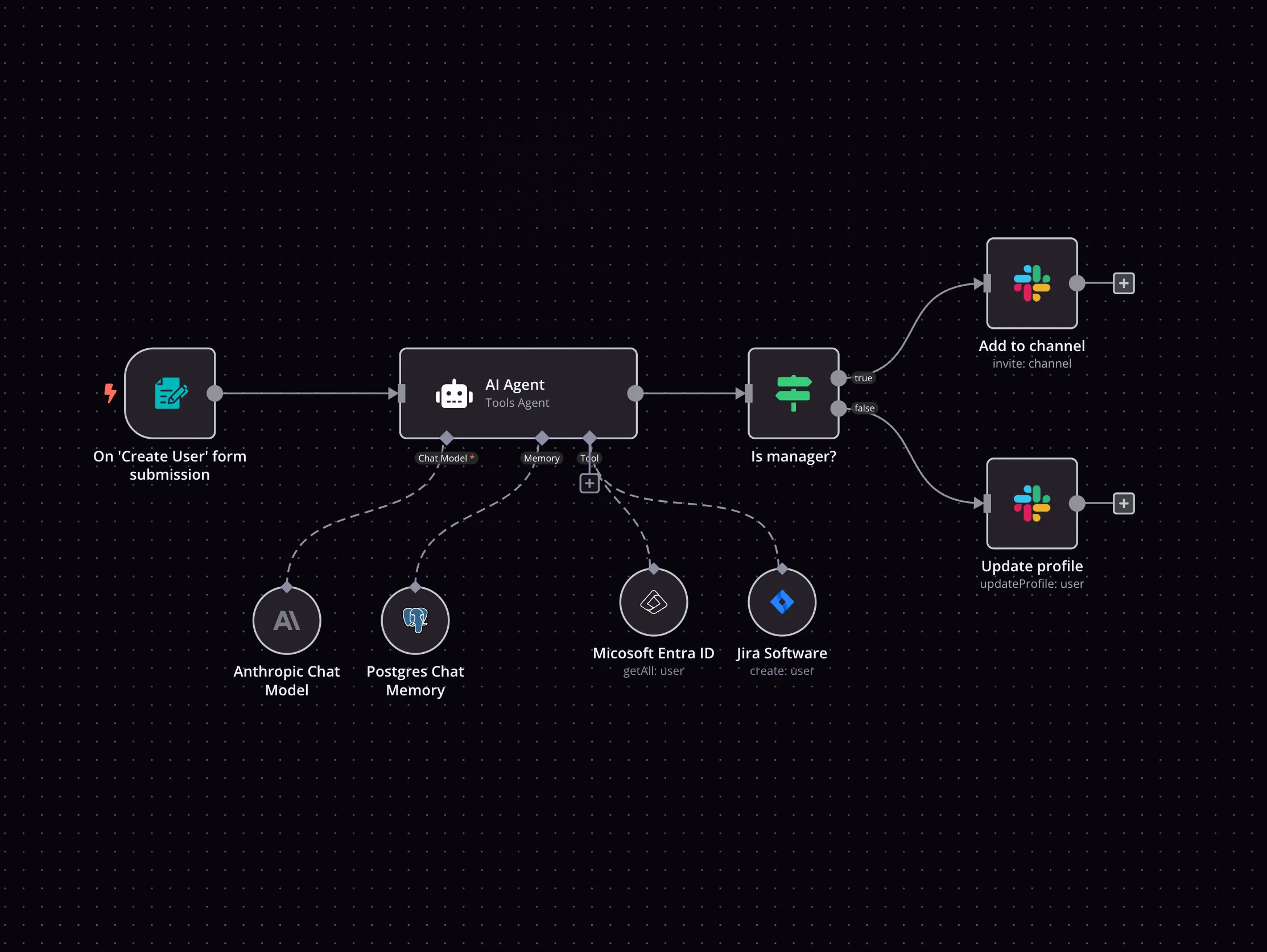Chatbase and SimpleLocalize integration
Save yourself the work of writing custom integrations for Chatbase and SimpleLocalize and use n8n instead. Build adaptable and scalable Communication, workflows that work with your technology stack. All within a building experience you will love.


How to connect Chatbase and SimpleLocalize
Create a new workflow and add the first step
In n8n, click the "Add workflow" button in the Workflows tab to create a new workflow. Add the starting point – a trigger on when your workflow should run: an app event, a schedule, a webhook call, another workflow, an AI chat, or a manual trigger. Sometimes, the HTTP Request node might already serve as your starting point.
Build your own Chatbase and SimpleLocalize integration
Create custom Chatbase and SimpleLocalize workflows by choosing triggers and actions. Nodes come with global operations and settings, as well as app-specific parameters that can be configured. You can also use the HTTP Request node to query data from any app or service with a REST API.
Supported API Endpoints for Chatbase
Create chatbot
Creates a new chatbot.
Update chatbot
Updates an existing chatbot.
Delete chatbot
Deletes an existing chatbot.
Get chatbots
Retrieves a list of all chatbots.
Get conversations
Retrieves conversations related to chatbots.
Delete chatbot icon
Removes the icon of a chatbot.
Upload chatbot icon
Uploads a new icon for a chatbot.
Delete chatbot profile picture
Removes the profile picture of a chatbot.
Upload chatbot profile picture
Uploads a new profile picture for a chatbot.
Get leads
Retrieves leads submitted to chatbots.
Message Chatbot
Send a message to a specified chatbot.
Update Chatbot Settings
Update the settings for a chatbot.
Webhooks API
Interact with the webhooks API for chatbots.
To set up Chatbase integration, add the HTTP Request node to your workflow canvas and authenticate it using a generic authentication method. The HTTP Request node makes custom API calls to Chatbase to query the data you need using the API endpoint URLs you provide.
See the example hereThese API endpoints were generated using n8n
n8n AI workflow transforms web scraping into an intelligent, AI-powered knowledge extraction system that uses vector embeddings to semantically analyze, chunk, store, and retrieve the most relevant API documentation from web pages. Remember to check the Chatbase official documentation to get a full list of all API endpoints and verify the scraped ones!
Supported API Endpoints for SimpleLocalize
Add translation
Add translations to the project.
Read translations
Fetch translations from the project.
Update translation
Update existing translations in the project.
Delete translation
Delete specific translation keys from the project.
Import translations
Import translations from a file.
Export translations
Export translations to a file.
Auto-translate
Automatically translate your project's texts.
Update translation
This endpoint allows you to update translations in your project.
Publish translations
This endpoint publishes translations to make them available publicly.
Get all translations
Fetches all translations for the specified project and environment.
Get translations by language key
Fetches translations for a specific language key.
Get translations by language key and namespace
Fetches translations filtered by language key and namespace.
Get translations by language key, namespace and customerId
Fetches translations filtered by language key, namespace, and customer ID.
Get customer-specific translations
Fetches translations that are customer-specific for a given language key.
Search translations
Searches for translations based on provided query parameters.
Create translation key
This endpoint allows you to add new translation keys to your project.
Delete translation key
This endpoint allows you to delete a translation key with its translations.
Customer API
This endpoint provides access to customer-specific APIs.
Language API
This endpoint provides access to language-specific APIs.
Get languages
Retrieves a list of available languages for the project and environment.
Translation project management
This endpoint allows you to manage translation projects.
Get customers
Retrieves a list of customers associated with the project and environment.
To set up SimpleLocalize integration, add the HTTP Request node to your workflow canvas and authenticate it using a generic authentication method. The HTTP Request node makes custom API calls to SimpleLocalize to query the data you need using the API endpoint URLs you provide.
See the example hereThese API endpoints were generated using n8n
n8n AI workflow transforms web scraping into an intelligent, AI-powered knowledge extraction system that uses vector embeddings to semantically analyze, chunk, store, and retrieve the most relevant API documentation from web pages. Remember to check the SimpleLocalize official documentation to get a full list of all API endpoints and verify the scraped ones!
Chatbase and SimpleLocalize integration details
FAQ
Can Chatbase connect with SimpleLocalize?
Can I use Chatbase’s API with n8n?
Can I use SimpleLocalize’s API with n8n?
Is n8n secure for integrating Chatbase and SimpleLocalize?
How to get started with Chatbase and SimpleLocalize integration in n8n.io?
Looking to integrate Chatbase and SimpleLocalize in your company?
The world's most popular workflow automation platform for technical teams including
Why use n8n to integrate Chatbase with SimpleLocalize
Build complex workflows, really fast


